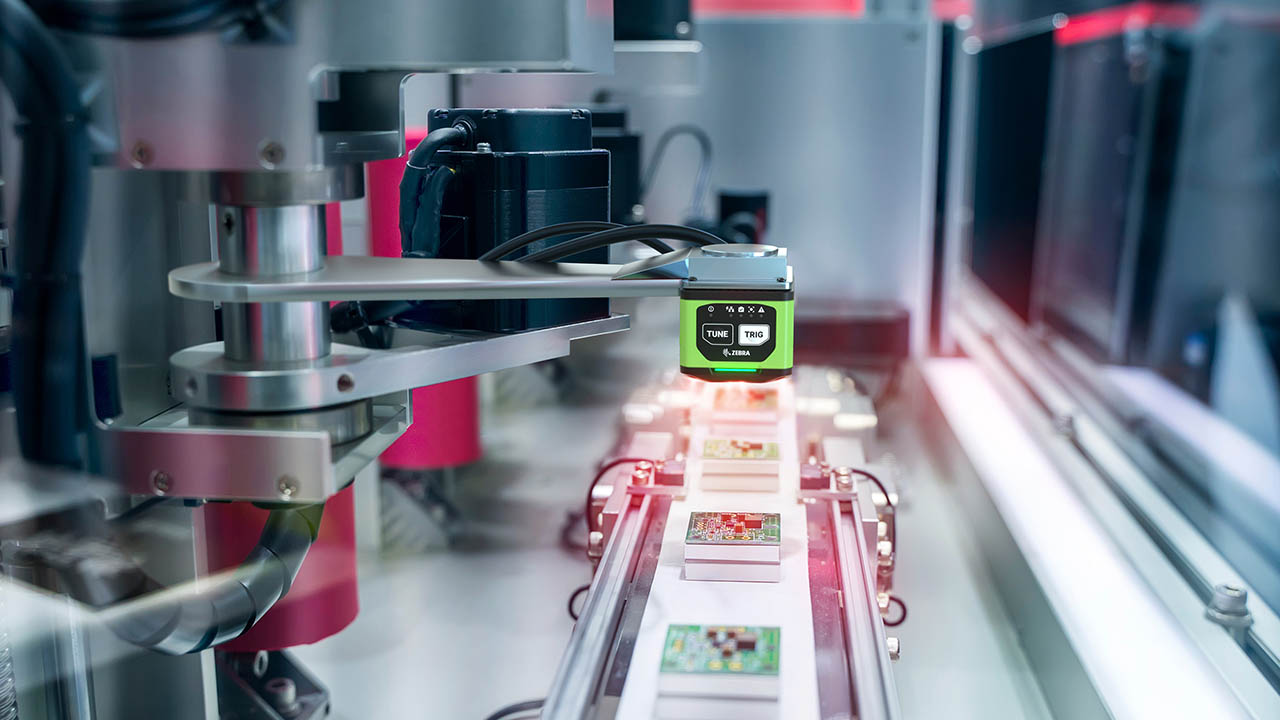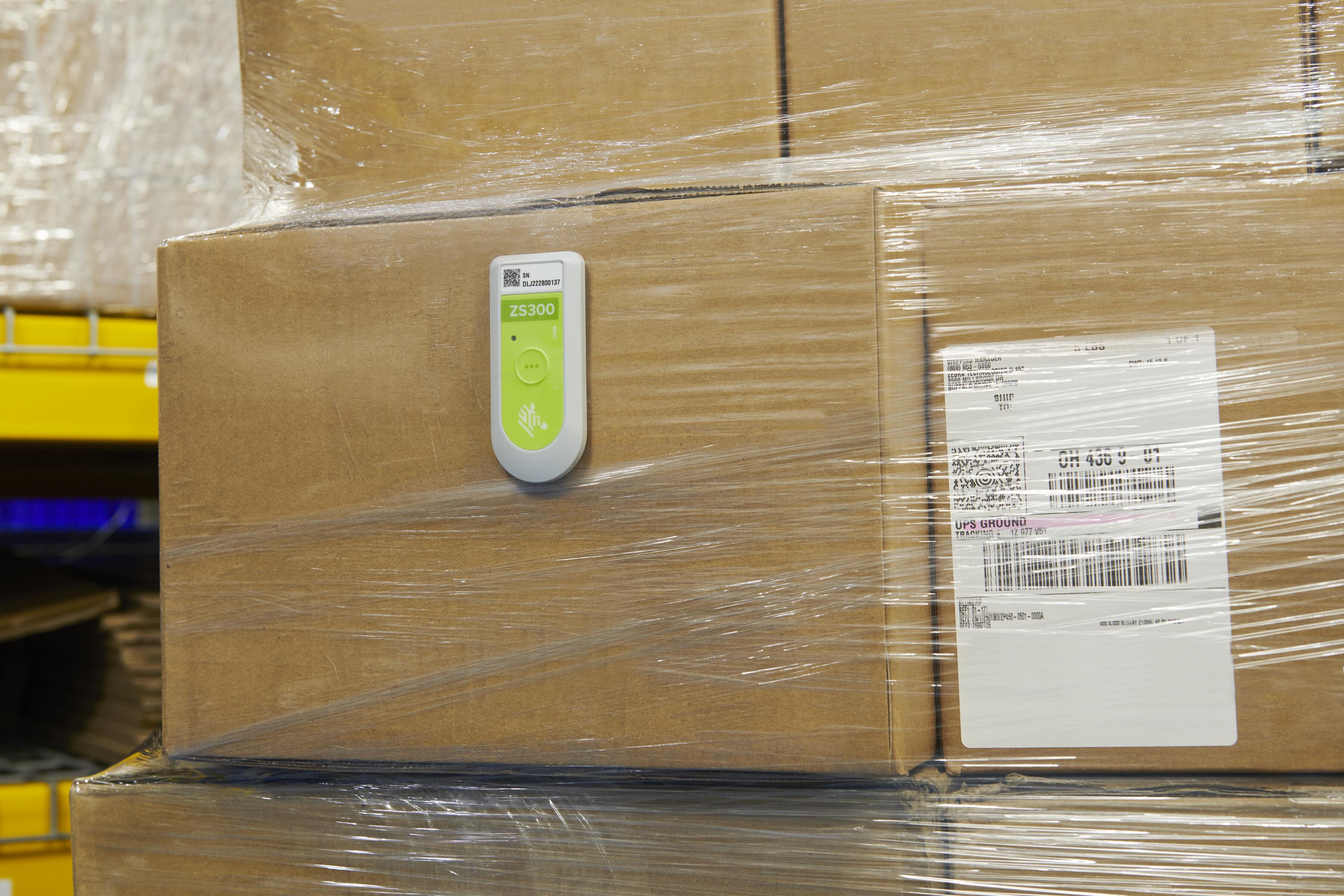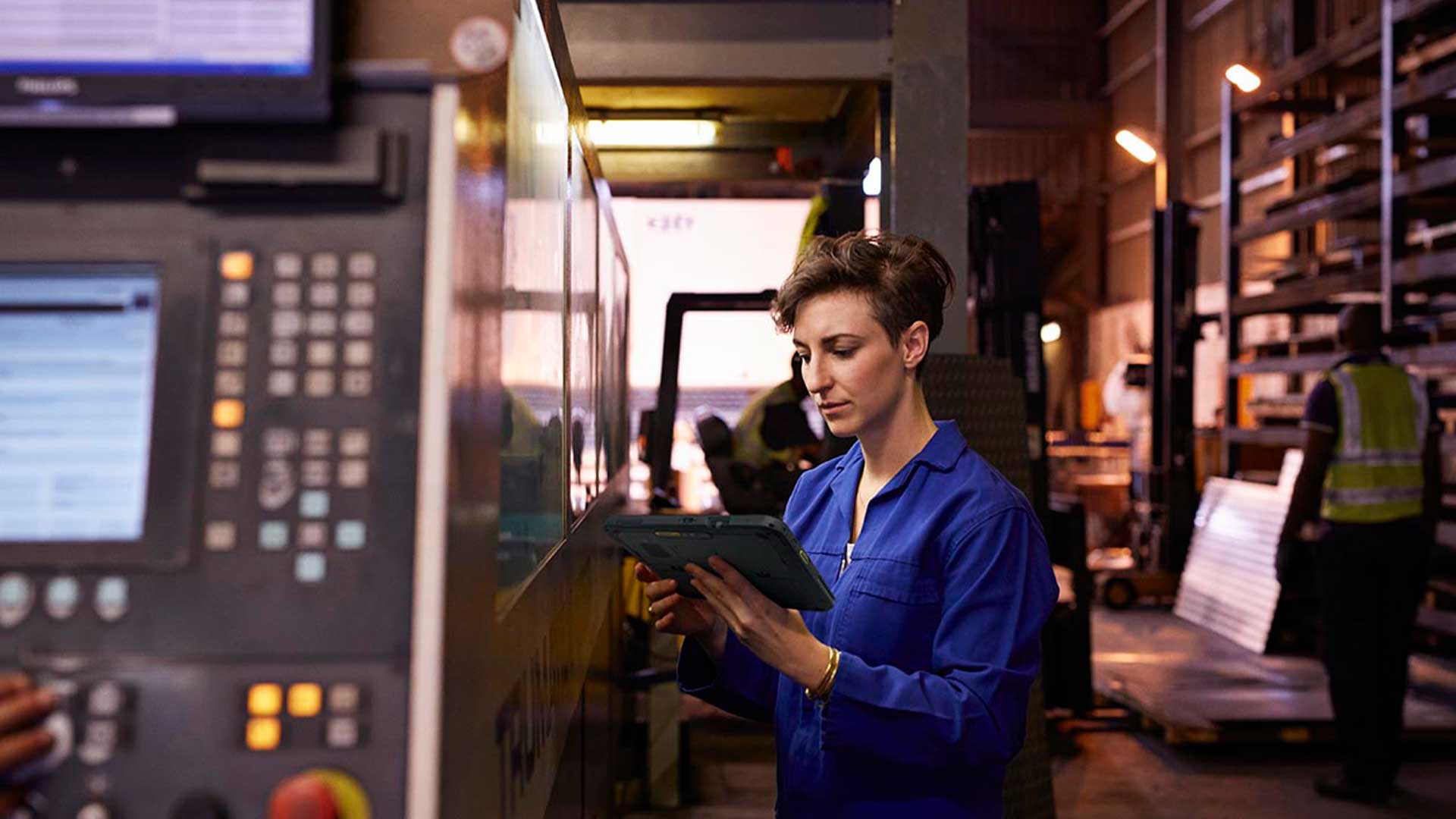Transform retail operations with Zebra’s retail technology solutions, featuring hardware and software for improving inventory management and empowering teams.
Streamline operations with Zebra’s healthcare technology solutions, featuring hardware and software to improve staff collaboration and optimise workflows.
Enhance processes with Zebra’s manufacturing technology solutions, featuring hardware and software for automation, data analysis, and factory connectivity.
Zebra’s transportation and logistics technology solutions feature hardware and software for enhancing route planning, visibility, and automating processes.
Zebra's public sector technology solutions enhance decision-making, streamline operations, and safeguard communities with advanced software and rugged hardware.
Zebra's hospitality technology solutions equip your hotel and restaurant staff to deliver superior customer and guest service through inventory tracking and more.
Zebra's market-leading solutions and products improve customer satisfaction with a lower cost per interaction by keeping service representatives connected with colleagues, customers, management and the tools they use to satisfy customers across the supply chain.
Empower your field workers with purpose-driven mobile technology solutions to help them capture and share critical data in any environment.
Zebra's range of mobile computers equip your workforce with the devices they need from handhelds and tablets to wearables and vehicle-mounted computers.
Zebra's desktop, mobile, industrial, and portable printers for barcode labels, receipts, RFID tags and cards give you smarter ways to track and manage assets.
Zebra's 1D and 2D corded and cordless barcode scanners anticipate any scanning challenge in a variety of environments, whether retail, healthcare, T&L or manufacturing.
Zebra's extensive range of RAIN RFID readers, antennas, and printers give you consistent and accurate tracking.
Choose Zebra's reliable barcode, RFID and card supplies carefully selected to ensure high performance, print quality, durability and readability.
Zebra's rugged tablets and 2-in-1 laptops are thin and lightweight, yet rugged to work wherever you do on familiar and easy-to-use Windows or Android OS.
With Zebra's family of fixed industrial scanners and machine vision technologies, you can tailor your solutions to your environment and applications.
Zebra’s line of kiosks can meet any self-service or digital signage need, from checking prices and stock on an in-aisle store kiosk to fully-featured kiosks that can be deployed on the wall, counter, desktop or floor in a retail store, hotel, airport check-in gate, physician’s office, local government office and more.
Adapt to market shifts, enhance worker productivity and secure long-term growth with AMRs. Deploy, redeploy and optimize autonomous mobile robots with ease.
Discover Zebra’s range of accessories from chargers, communication cables to cases to help you customise your mobile device for optimal efficiency.
Zebra's environmental sensors monitor temperature-sensitive products, offering data insights on environmental conditions across industry applications.
Zebra's location technologies provide real-time tracking for your organisation to better manage and optimise your critical assets and create more efficient workflows.
Enhance frontline operations with Zebra’s AI software solutions, which optimize workflows, streamline processes, and simplify tasks for improved business outcomes.
Empower your frontline with Zebra Companion AI, offering instant, tailored insights and support to streamline operations and enhance productivity.
The everything you need to rapidly and cost effectively develop high-performance AI vision applications on Zebra mobile computers.
Zebra Workcloud, enterprise software solutions boost efficiency, cut costs, improve inventory management, simplify communication and optimize resources.
Keep labour costs low, your talent happy and your organisation compliant. Create an agile operation that can navigate unexpected schedule changes and customer demand to drive sales, satisfy customers and improve your bottom line.
Drive successful enterprise collaboration with prioritized task notifications and improved communication capabilities for easier team collaboration.
Get full visibility of your inventory and automatically pinpoint leaks across all channels.
Reduce uncertainty when you anticipate market volatility. Predict, plan and stay agile to align inventory with shifting demand.
Drive down costs while driving up employee, security, and network performance with software designed to enhance Zebra's wireless infrastructure and mobile solutions.
Explore Zebra’s printer software to integrate, manage and monitor printers easily, maximising IT resources and minimising down time.
Make the most of every stage of your scanning journey from deployment to optimisation. Zebra's barcode scanner software lets you keep devices current and adapt them to your business needs for a stronger ROI across the full lifecycle.
RFID development, demonstration and production software and utilities help you build and manage your RFID deployments more efficiently.
RFID development, demonstration and production software and utilities help you build and manage your RFID deployments more efficiently.
Zebra DNA is the industry’s broadest suite of enterprise software that delivers an ideal experience for all during the entire lifetime of every Zebra device.
Advance your digital transformation and execute your strategic plans with the help of the right location and tracking technology.
Boost warehouse and manufacturing operations with Symmetry, an AMR software for fleet management of Autonomous Mobile Robots and streamlined automation workflows.
The Zebra Aurora suite of machine vision software enables users to solve their track-and-trace, vision inspection and industrial automation needs.
Zebra Aurora Focus brings a new level of simplicity to controlling enterprise-wide manufacturing and logistics automation solutions. With this powerful interface, it’s easy to set up, deploy and run Zebra’s Fixed Industrial Scanners and Machine Vision Smart Cameras, eliminating the need for different tools and reducing training and deployment time.
Aurora Imaging Library™, formerly Matrox Imaging Library, machine-vision software development kit (SDK) has a deep collection of tools for image capture, processing, analysis, annotation, display, and archiving. Code-level customisation starts here.
Aurora Design Assistant™, formerly Matrox Design Assistant, integrated development environment (IDE) is a flowchart-based platform for building machine vision applications, with templates to speed up development and bring solutions online quicker.
Designed for experienced programmers proficient in vision applications, Aurora Vision Library provides the same sophisticated functionality as our Aurora Vision Studio software but presented in programming language.
Aurora Vision Studio, an image processing software for machine & computer vision engineers, allows quick creation, integration & monitoring of powerful OEM vision applications.
Adding innovative tech is critical to your success, but it can be complex and disruptive. Professional Services help you accelerate adoption, and maximise productivity without affecting your workflows, business processes and finances.
Zebra's Managed Service delivers worry-free device management to ensure ultimate uptime for your Zebra Mobile Computers and Printers via dedicated experts.
Find ways you can contact Zebra Technologies’ Support, including Email and Chat, ask a technical question or initiate a Repair Request.
Zebra's Circular Economy Program helps you manage today’s challenges and plan for tomorrow with smart solutions that are good for your budget and the environment.

Industrial Automation Insider: One Expert Explains How Machine Vision Systems are Changing – and How They’ll Change Your Perception of Your Business
It doesn’t seem like it has been that long since everyone was talking about the need for speed. “The only way to get more orders out the door is to move faster,” they would say. But you and I both know speed isn’t always the problem or solution. Yes, you need to increase throughput in your operation. But you can’t afford to sacrifice accuracy or control for the sake of speed. That’s why automation is so appealing.
It reduces, and often eliminates, the risk of human error, which is what tends to slow down operations. Whenever a mistake is made, someone must stop whatever else they’re working on to make things right, which halts progress toward desired outcomes, such as getting more product out the door. But as we’ve discussed before, automation by itself is not a solution. There are so many different ways to automate workflows, and there are too many opportunities to miss the mark by only automating certain parts of workflows.
For example, automating material handling is great and necessary. But if you only automate that and leave visual inspections, inventory counts and decision-making up to people, you’re not going to be able to get as much done in a day – or get things done right the first time. That’s why industrial automation is becoming as vital to the success of your business as the barcode has long been to retail – whether you’re in manufacturing, transportation and logistics, or even healthcare. You must be able to meet service level agreements without sacrificing margin.
Fortunately, there is a growing number of ways that machine vision and imaging systems are directly influencing those capabilities.
That’s why I asked Andy Zosel to join me for our latest Industrial Automation Insider podcast episode.
LISTEN NOW
Andy just joined Zebra as Senior Vice President of Advanced Data Capture and Machine Vision & Imaging (ADC/MVI), which is a very big deal for Zebra, our customers and our partners. He has spent the last 25 years overseeing engineering and manufacturing for Omron Americas while also leading Delta Tau, a family of motion control hardware and software products, and machine vision business, Microscan.
Why does this matter?
During that time, he directed the development and delivery of innovative products that included the first combination code reader/vision smart camera, first liquid lens autofocus code reader, and first browser-based on-board user-interface, and he is a named inventor on multiple patents. So, he has been in the deep end of the growing pool of industrial automation solutions for quite some time and knows how to surface incredible solutions for a variety of issues you might be dealing with.
So, for the next few minutes, you’ll want to sit back and listen to what Andy has to say about:
The “perception” issue plaguing your business and what you should do about it.
The surprises that machine vision might uncover within your existing processes and operations. (Things you weren’t even looking for because they weren’t apparent problems.)
The “iceberg model” that’s common with every technology deployment, and how ignoring it can cause a meltdown in your organization.
How the economics of machine vision are changing to make the technology more accessible to you, especially as new applications are identified.
What a “complete solution” looks like when it comes to industrial automation and how you can know for sure what technology components are right for the challenge at hand.
What industrial automation technology does best, and what it can’t necessarily do.
“Project scope creep” and the things that can distract you from solving the original business problem.
How the integration of Matrox Imaging into Zebra is progressing, and what powerhouse capabilities you can expect as a result. (Hint: It’s all about the power of the people.)
He also shares…
How you can build trust and confidence in the different technologies you’re deploying – and ensure they aren’t putting strain on the process engineers, control engineers and operations managers charged with integrating, utilizing and maintaining these technology systems.
What “future proofing” really means when it comes to technology, and what you can do to keep your industrial automation systems from becoming obsolete.
How you can know whether a technology is being recommended because it’s the “best solution” or because that’s all a vendor can offer as a “solution.”
Why you should always have a partner (or team of partners) who you can trust to be by your side, in the trenches, long after a technology system is online.
What’s next for Zebra’s industrial automation business and industrial automation overall (such as AI and deep learning, 3D vision, better IoT intelligence utilization and more)!
PLAY NOW
Want to hear more about how you can use industrial automation to improve outcomes across your organization? Check out these conversations:

Jim Witherspoon
Jim Witherspoon is currently a Product Manager with Zebra’s Machine Vision and Fixed Industrial Scanning group where he is responsible for the Zebra Aurora™ software and helping to drive the best solutions to market.
Jim has more than 18 years of experience with machine vision and fixed industrial scanning technology and has worked in application engineering, sales, and management. Jim previously worked with many of the world’s top companies to install thousands of machine vision and fixed industrial scanning systems and solutions.
Zebra Developer Blog
Zebra Developer BlogZebra Developer Blog
Are you a Zebra Developer? Find more technical discussions on our Developer Portal blog.
Zebra Story Hub
Zebra Story HubZebra Story Hub
Looking for more expert insights? Visit the Zebra Story Hub for more interviews, news, and industry trend analysis.
Search the Blog
Search the BlogSearch the Blog
Use the below link to search all of our blog posts.
Most Recent
Legal Terms of Use Privacy Policy Supply Chain Transparency
ZEBRA and the stylized Zebra head are trademarks of Zebra Technologies Corp., registered in many jurisdictions worldwide. All other trademarks are the property of their respective owners. Note: Some content or images on zebra.com may have been generated in whole or in part by AI. ©2025 Zebra Technologies Corp. and/or its affiliates.




